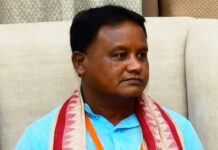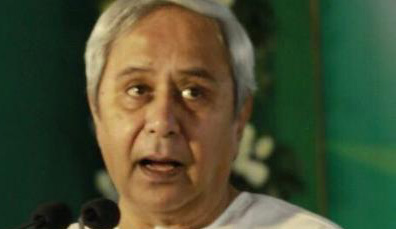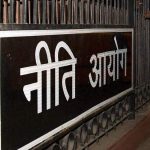India is a strange country where elections have been held amidst a raging pandemic. A bye-election is due in our own state with polling to take place a few weeks later. As the results in states like West Bengal and Kerala were announced political observers began speculating about Odisha chief minister’s stand in the national political perspective. Will he continue to remain non-aligned or will he join the forces opposing or supporting the BJP? Only the chief minister can answer these questions but at the moment his focus is on fighting the COVID pandemic in his own state and lending help to the national government and fellow chief ministers.
As election results from West Bengal, Tamil Nadu and Kerala trickled in the focus turned once again on regional satraps such as Odisha chief minister Naveen Patnaik who is yet to align himself with any national or regional coalition of parties in the country. The forces opposing the Narendra Modi-led BJP have been trying hard to unite like-minded parties in the hope of dethroning the NDA government at the Centre. Patnaik has not responded their overtures in the past and seems unlikely to do so even now.
The fact is that he has emerged the tallest among the regional satraps of the country not only because of his formidable electoral record but also the way he conducts his politics. The five-time chief minister, who has won each of the elections that he has fought solely on the strength of his government’s performance, has been consistently following a policy of equidistance from both BJP and Congress which lead the two big national alliances in the country at the moment.
But despite this his moves even at the national level have always been appreciated because he is seen as a leader who rises above narrow political interests where issues of national importance are concerned. That explains his support to the BJP-led National Democratic Alliance (NDA) government on certain crucial issues. While this might have baffled political observers the chief minister had strong logic to back each of his decisions.
Never one to cross the line of decency Patnaik has set an example before his contemporaries in dignified political behavior. Political differences have never stopped him from offering a helping hand to others in times of need. His recent move of speaking to Prime Minister, Narendra Modi and Delhi chief minister Aravind Kejriwal and offering them support in their fight against the COVID pandemic was widely appreciated. Under his leadership Odisha has been supplying medical oxygen to deficient states such as Delhi to help reduce casualties in hospitals which have been running short of oxygen.
Patnaik was also the first leader to announce that his party—Biju Janata Dal (BJD)—won’t organize campaign rallies and public meetings for the Pipili by-poll as this might endanger thousands of precious lives. He even urged the Election Commission to reconsider the mode of campaigning for the bye-election in view of the pandemic which is also sweeping Odisha. The Commission seems to have appreciated his stand.
On the state front Patnaik’s electoral record speaks for itself. While he has never lost an election himself since his entry into politics in 1997 following his legendary father Biju Patnaik’s death he has led the BJD to five back to back victories in the state, setting a record which will be difficult to beat. What is significant is that his party has won each of these elections convincingly and even in his fifth term as the chief minister of the state the party enjoys a brute majority in the state assembly.
But Patnaik has never been complacent about his achievements. Instead of resting on his laurels he has chosen to work tirelessly for the welfare of people of the state which has undergone a tremendous transformation under his leadership. Odisha, once a byword for poverty and backwardness, is today counted among the developed states of the country and has been attracting investors from around the world. It has taken big strides in the field of agriculture with schemes like KALIA bringing immense benefits to farmers. More importantly he has given Odias a sense of pride with Bhubaneswar not only becoming the first smart city of the country but also emerging as its new sports capital hosting mega events such as Men’s Hockey World Cup. No wonder Patnaik continues to rule the state without ever mothering about his adversaries.
In these trying times both he and the government at the Centre have kept the focus firmly on the COVID storm that India is battling, its worst-ever health crisis in the last several decades. While the second wave of the pandemic continues to lash the country with an ever increasing case tally experts are already talking in terms of a third wave. It’s like an endless nightmare. An already bad situation has been worsened by an acute shortage of medical oxygen. TV visuals of people dying without oxygen in and outside hospitals in the national capital underscore the utter helplessness of the situation. It is a national emergency and the people of the country must meet the challenge unitedly. This is the need of the hour and also the call of Prime Minister, Narendra Modi who has been leading the battle against the pandemic from the front.
True the numbers are frightening. India has been reporting over three lakh positive cases consistently for the last few days. The total case tally in the country has climbed to 1,76,36,307 and death toll, too, has risen 1,97,894. Rapped by Madras High Court for allowing election rallies amidst a raging pandemic the Election Commission has banned all victory processions on the day of counting of votes in the five states where elections were held.
Such a situation had never arisen in the country which had not only dealt successfully with the first wave of the pandemic but also lent a helping hand to some of its neighbours. Presently it is struggling to ramp up its oxygen production. Vaccines, too, are in short supply in some of the states. India’s new wave is being described by international experts as the “worst surge in the world”. Lockdowns, which invariably hit the economy and should be the last resort in any such crisis, have been imposed in some mega cities. Some countries have banned flights to India.
What went wrong? What triggered this sudden and alarming rise in COVID 19 cases in the country? Complacency, not on the part of the government but on the part of the people, has been the most important factor contributing to the present crisis. Despite repeated reminders from experts and senior health officials people have been openly defying containment measures including wearing of masks and maintaining social distance. Markets get crowded with unmasked people the moment they open and some of us appear to draw a perverse pleasure in defying the COVID protocol. While this protocol also went for a toss at the rallies organized by different political parties which campaigned in the five election-bound states, the government should have avoided granting permission for large religious congregations such as the one we witnessed at the Kumbh in Haridwar.
But all is not lost. Though how long this latest COVID 19 wave in the country would last is anyone’s guess the Prime Minister has taken some firm steps to bring the situation under control. While necessary infrastructure is being set up across the country to ramp up the production of medical oxygen the situation on the vaccine front, too, is likely to improve. Thanks to India’s diplomatic initiatives America has offered it all possible help to overcome the present crisis. Following a telephonic conversation with Prime Minister Modi, the White House announced help that ranges from oxygen supplies to the supply of raw materials for COVID-19 vaccines. “India was there for us, and we will be there for them,” President Biden said in a tweet soon after his phone call with Modi.
Leaders like chief minister Naveen Patnaik have lent Prime Minister Modi a helping hand. Modi should also be thankful to some top world leaders who can be trusted to come to India’s aid at the time of a crisis. The US has already extended a helping hand and many others may follow. The crisis will also test India’s proverbial resilience and the country, one feels confident, will once again overcome the challenge thrown by the pandemic.








































